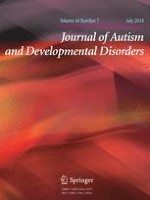01-07-2014 | Original Paper
Young Friendship in HFASD and Typical Development: Friend Versus Non-friend Comparisons
Gepubliceerd in: Journal of Autism and Developmental Disorders | Uitgave 7/2014
Log in om toegang te krijgenAbstract
This study conducted comparative assessment of friendship in preschoolers with high-functioning autism spectrum disorder (HFASD, n = 29) versus preschoolers with typical development (n = 30), focusing on interactions with friends versus acquaintances. Groups were matched on SES, verbal/nonverbal MA, IQ, and CA. Multidimensional assessments included: mothers’ and teachers’ reports about friends’ and friendship characteristics and observed individual and dyadic behaviors throughout interactions with friends versus non-friends during construction, drawing, and free-play situations. Findings revealed group differences in peer interaction favoring the typical development group, thus supporting the neuropsychological profile of HFASD. However, both groups’ interactions with friends surpassed interactions with acquaintances on several key socio-communicative and intersubjective capabilities, thus suggesting that friendship may contribute to enhancement and practice of social interaction in HFASD.
